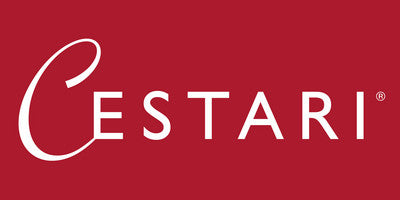Serrated Knife Use and Care Instructions
Ceramic Knife Care and Maintenance

Ceramic knives do not need regular honing sharpening the way steel knives do, however, they are more fragile if mishandled so here are some things you need to remember to protect your investment.
DO
- Use ceramic knives with a wood, bamboo, or plastic cutting board
- Use conventional steel knives for carving, prying, boning, and cutting frozen food and cheese which require a more flexible material than ceramic
- Always keep your knife clean. Unlike steel knives, ceramic will not pit or corrode when exposed to dishwasher detergent, so these can be safely cleaned in the dishwasher, but be careful they are secured on a top rack to avoid chipping
- Store your knife in a sheath, tray, or knife block.
DO NOT
- Drop ceramic knives on hard surfaces
- Twist or flex your ceramic knife when cutting
- Use to cut hard frozen food, squash, pumpkin, corn cob, or bones
- Expose the blade to an open flame
- Scrape hard surfaces with the edge of a ceramic blade
- Turn the blade on its side to smash garlic or other items
- Apply force to the side of the blade
- Cut on hard surfaces like glass, ceramic, tile, or stone
SAFETY INSTRUCTIONS
After removing the knife from its packaging handle carefully. Remember a knife is dangerous if misused. Always store knives away from the reach of children.~~~~~~~~~~~~~~~~~~~~~~~~~~~
When to Use a Plain Edge Knife vs a Serrated Knife
~~~~~~~~~~~~~~~~~~~~~~~~~~~
Great Ways to Use a Serrated Knife
The scalloped blade of a serrated knife excels at cutting through foods with a hard exterior and softer interior, such as a loaf of crusty bread. These knives work like a saw, where the teeth catch and rip through a hard exterior before the knife then cuts cleanly through the food.
Crusty Bread: The serrated edges allow the knife to slice bread without squashes it. The crust also crumbles less when cut by a serrated blade.
Tomatoes: While Tomatoes are soft, the skin is designed to protect the interior and can be crushed by a standard knife. A serrated blade allows you to cut thin, neat slices of even juicy ripe tomatoes.
Citrus Fruits: Citrus skin is tough and thick, while the inside is soft, making these another food best cut with a ceramic knife.
Sausage: If you want nice neat slices of sausage, a serrated knife will do a good job.
Serrated knifes are also better than a standard knife at cutting crumbly foods, gently separately slices with fewer crumbs.
Phyllo Dough: This delicate pastry is best sliced with a serrated knife.
Layer Cake: A serrated knife makes more delicate work of slicing layers in two, as well as slicing a frosted cake.
Chocolate: Baking chocolate can be cut without shattering with a serrated knife.
You’ll also want to reach for a serrated knife to slice through foods with varying textures, such as big stuffed sandwiches or hoagies, as well as ice cream sandwiches, and layered desserts
Copyright 2021 Larson MacDowell Enterprises LLC
